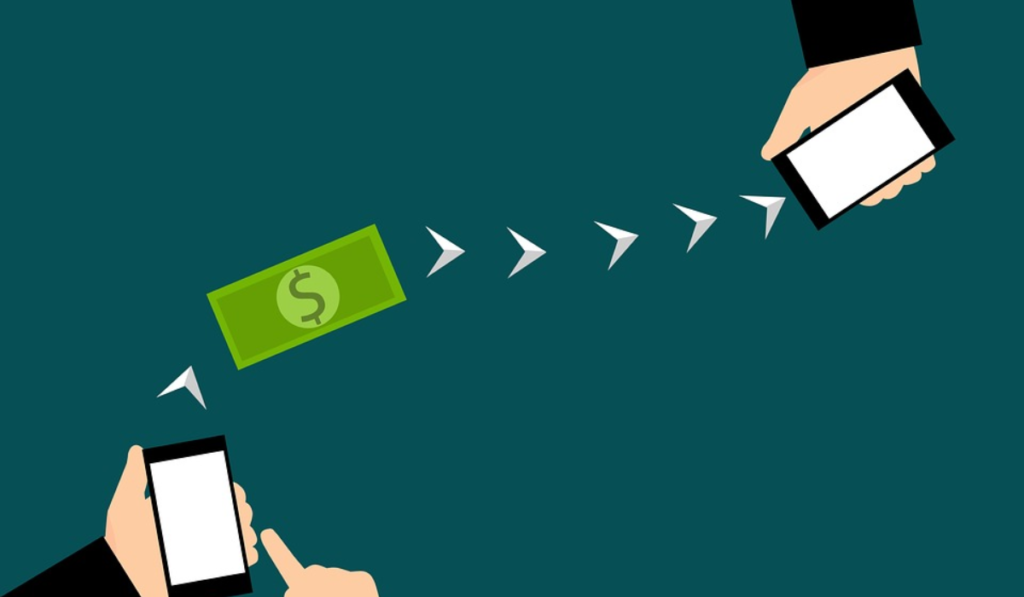In every transfer through the Automated Clearing House (ACH) Network, a distinctive reference number, known as the ACH number or a Tracer number, is assigned. This Tracer number or also known as ACH trace number acts as a vital tool for tracking funds and identifying their location within any given banking institution.
To protect account information and identity, specific transaction details in ACH transfers remain private. While you may not have direct visibility into the progress of your transaction between banks, reaching out to your bank can help you determine whether the transaction has been processed and sent. The Trace ID plays a crucial role in enabling banks to monitor the whereabouts of funds. In this article, we will discuss everything about the tracer number and How to trace the ACH transaction, so read on!
What Are ACH Transactions?
ACH is a financial network that facilitates electronic payments and money transfers. It serves as an efficient way to move funds between bank accounts, bypassing the need for traditional methods such as wire transfers, cash, or paper checks. The ACH network is a payment system governed by NACHA.

It might be an ACH tranfer if a bill is settled electronically or when someone receive direct deposits from their employer. The ACH network is likely behind the scenes, making it all happen.
For businesses, ACH payments offer a convenient alternative to paper checks and credit card transactions. With their electronic nature, ACH payments are speedier and more dependable than traditional checks, facilitating smoother accounting processes.
Moreover, processing an ACH transfer generally incurs lower costs compared to credit card payments or wire transfers. For businesses handling recurring payments, these savings can add up significantly.
How Do The ACH Payments Work?
It’s worth noting that ACH transactions come in two primary types of transactions – debit and credit transactions.

- Debit Transactions: Debit ACH transactions involve the receiver granting the originator permission to withdraw funds from their account. This is commonly observed in recurring bill payments, like for utilities or mortgage dues.
- Credit Transactions: In a credit ACH transaction, the originator initiates a payment to the receiver’s account. For instance, an employer might use ACH to deposit salaries into employees’ bank accounts.
Here’s a simple breakdown of how the processing works:
- Originator: This party kickstarts the ACH transaction, be it an individual, a business, or a government agency. They send payment instructions to their financial institution.
- Financial Institutions: Banks and credit unions take on a pivotal role in ACH transactions, acting as intermediaries between the originator and the receiver. The originator’s bank, known as the ODFI, relays the payment instructions to the ACH network.
- ACH Network: The ACH network oversees the entire transaction process, ensuring the secure transfer of funds from the originator’s account to the receiver’s account.
- Receiver: This party ultimately receives the funds, holding an account with their own financial institution called the RDFI. The RDFI credits the received funds to the receiver’s account.
Introduction To Tracer Number And Why It Is Important?
A tracer number, in the context of ACH transfers, is a unique 15-digit identifier crucial for monitoring both incoming and outgoing transactions. The originating financial institution generates it and serves as a reference for tracking the transfer’s progress before it reaches the recipient’s system.

Let’s discuss some common situations where getting the tracer number becomes crucial:
- Unauthorized Transactions: If you spot an unusual withdrawal from your bank account that you didn’t authorize, possibly due to a fraudulent ACH transaction. Trace number banking is essential to uncover the source and the financial institution behind the unauthorized transfer.
- Payment Disputes: If you’ve initiated an ACH payment to a vendor or service provider, but there’s a discrepancy in the charged amount or the services provided. Tracing it clears transaction records, including account particulars and timestamps.
- Missing or Delayed Payments: If you’re anticipating a payment from a client or customer, but it hasn’t arrived on schedule. It’s essential to trace the ACH transfer to ascertain its status. A tracer number enables you to track the payment’s journey within the ACH network, pinpointing any delays or issues encountered along the way.
- Recurring Payments: If you’ve established recurring ACH payments for bills or subscriptions and you want to verify that they are processing correctly. Tracing these payments guarantees their consistent deduction from your account as planned, averting missed payments and potential late fees.
Factors To Consider Before You Trace ACH Transactions
Before you begin the process of tracing an ACH transaction, it’s crucial to collect the necessary information and documents. Having these prerequisites readily available significantly enhances your ability to conduct a successful trace. Here’s what you should have prepared:
- Transaction Details
Gather all required information about the ACH transaction at hand. This includes the transaction’s date and time, the amount, the names of the originator and receiver, and any associated reference or confirmation numbers.
- Account Statements
Retrieve your bank or financial institution account statements that cover the period during which the ACH transaction took place. These statements serve as a historical record of your account activity.
- Authorization Records
If the ACH transaction was authorized, collect any documentation that verifies the legitimacy of the transaction. This might involve contracts, invoices, purchase orders, or signed authorization forms.
- Contact Information
Ensure you have contact details for your financial institution, including phone numbers and email addresses for customer support or fraud departments. You should also reach out to the originator or receiver of the ACH transaction.
How To Monitor An ACH Transfer?
Once you’ve patiently waited for at least three days and the money still hasn’t appeared, or if you have concerns for any reason, you can reach out to your payment provider or do ACH trace number lookup.
You’ll only need to reference the tracking number if a payment bounces or if a dispute arises, and even then, this is a rare occurrence, thanks to the robust security measures put in place by your payment provider. Here’s how you can track an ACH transaction:
#1 Finding The Tracer Number
The payment company can track your ACH transaction by retrieving your trace ID. Each transaction comes with two ACH reference numbers, one of which is yours. The other belongs to the recipient of the transaction. It takes a few days for these details to become accessible as transit and routing numbers are exchanged between the ACH network and your bank.
#2 Get in Touch with the Bank
If you’re the one anticipating a payment, reach out to your bank with the ACH trace number. You should ask the payer for these specific details. Once retrieved, the bank can validate all the transaction particulars, including the date, amount, and ACH tracking number.
Conversely, if you’re the payee awaiting the clearance of the transaction, get in touch with your bank. Sometimes, sharing the transaction’s date and amount is adequate for the bank to trace the payment. They should be able to provide you with an ACH confirmation number. Make sure to ask them to communicate with their bank or payment processor, and you can do the same with yours.
#3 Monitor the Payment
Regrettably, everyday users lack access to the bank tracer number system, leaving the task of monitoring the ACH payment in the capable hands of the bank. If the transaction appears to be lost within the system, the bank representatives may request additional details, such as the transaction type. However, in most instances, they will successfully trace the journey and whereabouts of the transfer within the ACH network.
While it can be frustrating, you can trust your payment provider to resolve the issue. Typically, they can swiftly locate the funds within the ACH network.
How To Find This Trace ID Number?
To find a payment you’ve made, log in to your preferred online platform and locate the transaction details section. Although the specific placement might vary on the interface, you’ll typically find the tracer number labeled as “Transaction details.”
Here, you can retrieve the transaction’s tracer number. You’ll usually encounter two tracer numbers – the “destination” ID and the “source” ID. The former becomes traceable the day following the transaction initiation, while the latter becomes accessible once the payment has successfully reached the destination bank account. Share this tracer number with the intended recipient and advise them to reach out to their financial institution. This information should suffice to determine the transaction’s location and current status.
How long does it take for an ACH transfer to Complete?
In contrast to wire transfers, which can be completed within minutes to a few hours, ACH transfers typically require a few business days. The precise time for ACH transfers to complete varies depending on various factors. Firstly, network operators handle ACH transfers in batches, limited to three times daily. Additionally, upon receiving transferred funds, financial institutions may opt to hold them.
It’s important to note that the specific rules can vary from one bank to another. Notably, larger amounts often necessitate more time for resolution.
Conclusion
Understanding the role of the ACH trace number in monitoring and tracing ACH transactions is crucial for addressing issues like unauthorized transactions, payment disputes, and delayed payments and ensuring the smooth processing of recurring payments.
By gathering necessary transaction details, account statements, authorization records and contacting your financial institution, you can effectively monitor bank trace numbers. While ACH transfers may take several business days to complete, the secure network ensures the reliable transfer of funds between accounts.
Frequently Asked Questions
Q: What Are the Transaction Fees?
In the majority of cases, ACH debit transfers come without charges. This means when your employer deposits your salary into your account or you settle your electric bill through your bank's bill payment service, you typically won't see any fees. However, there might be a fee for expedited bill payments.
On the other hand, ACH credit transfers, like moving funds between your accounts at different banks, might incur a small fee (which is usually around $3). For instance, if you have an account at Bank A and wish to transfer funds to a linked account at Bank B, the fee applies solely to the initial transfer from the source account, not when you receive the funds in your other account. Therefore, while Bank A might charge you for sending the funds, Bank B wouldn't charge for receiving them. Many banks don't impose an additional fee for transferring funds externally. Merchants may be accountable for certain fees.Q: What does a trace number signify in an ACH transaction?
A tracer number, consisting of 15 digits, serves as a unique identifier crucial for monitoring both incoming and outgoing ACH transfers. This number, furnished by the sending institution, can be shared with the receiving institution in advance to track the progress of the impending transfer, even before it officially enters their system.
Q: How much time does an ACH transfer usually take?
ACH debit, involving bill payments or withdrawals, typically undergoes processing within 1 to 3 days. Conversely, an ACH credit, encompassing direct deposits or vendor payments, often processes within a single day. Furthermore, opting for same-day ACH, which generally necessitates an additional fee, ensures processing within the same business day.
Q: Is it possible to track bank transfers?
You have the option to request a tracer number on the transfer from your bank, enabling them to ascertain whether the funds have been successfully deposited into the intended recipient's account.


